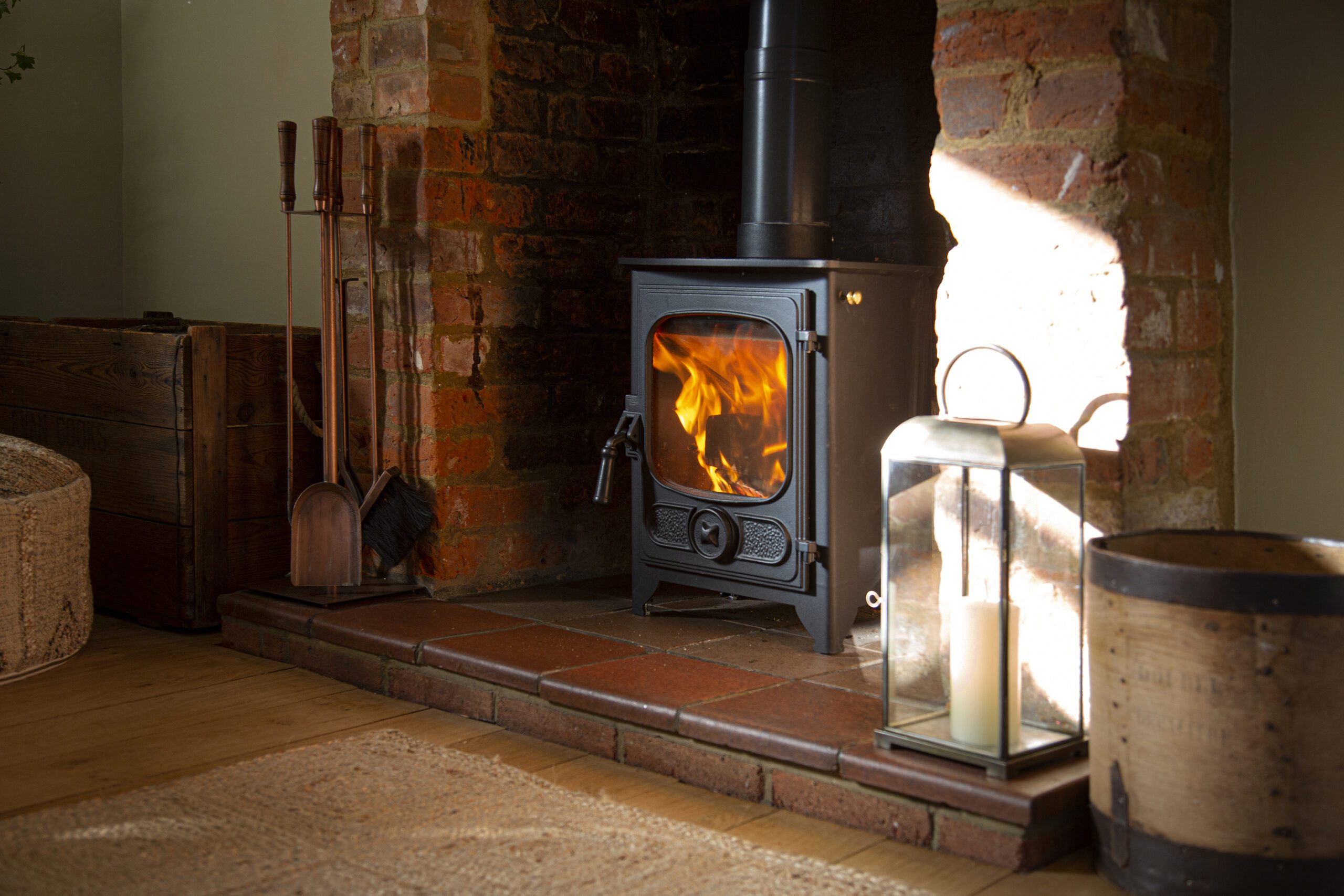Wood-burning stoves are a popular way to heat homes because they offer an unparalleled source of comfort and warmth, however, it is important to be aware of carbon monoxide (CO) and the potential threats associated with its emissions.
Carbon monoxide is a colourless, odourless gas that can be very dangerous if inhaled in high concentrations. In this article, we will discuss the dangers of carbon monoxide, symptoms to look out for and, importantly, effective strategies for preventing carbon monoxide issues when using a wood-burning stove.
Why CO Is So Dangerous
Carbon monoxide is a dangerous gas because it binds to haemoglobin in the blood and reduces its ability to transport oxygen effectively. This can lead to oxygen deprivation and carbon monoxide poisoning. The gas can accumulate indoors and pose a severe threat, especially in poorly ventilated spaces. Even low levels of carbon monoxide exposure can result in long-term health issues.
Find out our commonly asked questions around wood-burning stoves here.
CO Exposure Symptoms to Look Out For
Recognising the signs of carbon monoxide exposure is key for early detection and prevention of severe consequences.
Headaches and dizziness are common initial symptoms of carbon monoxide poisoning; exposure can also cause nausea and vomiting, often accompanied by a general feeling of being unwell.
Excessive tiredness, confusion, and difficulty concentrating are further signs of carbon monoxide poisoning. These symptoms can be particularly dangerous as they may impair judgment and hinder your ability to recognise the risk.
If you or anyone in your home experiences any of these symptoms while using your wood-burning stove, immediately ventilate the area and seek fresh air, and consult a medical professional.
How to Avoid Carbon Monoxide Problems
While the effects of carbon monoxide inhalation can be severe, it is thankfully easy to minimise the risk by following some simple precautions.
Clean Out Your Wood-Burning Stove
Regular maintenance is essential for the safe operation of your wood-burning stove. Cleaning the stove and its flue system helps prevent the build-up of creosote, a highly flammable substance that releases carbon monoxide and can lead to chimney fires.
Regularly remove ash (leaving about an inch in the base) and debris from the stove’s interior, including the firebox, grate, and ash pan. Use a metal scoop or shovel designed for this purpose. Dispose of the ashes in a metal container placed away from flammable materials.
Find out how to clean your wood-burning stove here.
Get Your Flue Inspected Annually
It’s also important to have a clean chimney and flue. Schedule annual professional inspections and cleanings to remove creosote and other blockages from your chimney and flue system. A qualified technician will ensure that the flue is clear, reducing the risk of carbon monoxide build-up.
An annual inspection should include:
• Inspecting the flue for any cracks, leaks or damage that could result in the escape of carbon monoxide.
• Ensuring that there are no blockages or obstructions in the chimney, such as nests or debris. These can impede proper ventilation and increase the risk of carbon monoxide buildup.
• Assessing the combustion efficiency of your wood-burning stove. They will ensure that the stove is operating at its optimal level, minimising the production of carbon monoxide.
Provide Sufficient Ventilation
Proper ventilation is crucial to minimise the risk of carbon monoxide build-up. Ensure your stove is installed in a well-ventilated area, and that your home has adequate fresh air intake. Keep air vents unobstructed and consider installing a vent fan to improve air circulation.
Install Carbon Monoxide Alarms
Installing a carbon monoxide alarm is a crucial safety measure for any home with a wood-burning stove. These alarms can detect the presence of carbon monoxide gas and alert you to its presence, allowing for swift action.
Install a carbon monoxide alarm on each level of your home and near sleeping areas. Ensure they are mounted in accordance with the manufacturer’s instructions for placement, and test your carbon monoxide alarms regularly to ensure they are working properly.
Explore how to use a wood-burning stove here.
Burn the Correct Fuel
Another important precaution to take is using only the correct fuel – this is paramount for safe wood-burning. Burn only seasoned hardwood that has been properly dried; it burns more efficiently, produces less smoke and reduces the risk of carbon monoxide emissions.
Do not burn treated or painted wood in your stove. These materials can release toxic chemicals when burned, including carbon monoxide.
Why Choose Us?
Charnwood has been committed to providing quality wood-burning stoves since 1972 and we know all there is to know about wood burners, and how to use them safely while providing the utmost in warmth and cosiness. If you have any questions about heating your home with a wood-burning stove, please get in touch.

